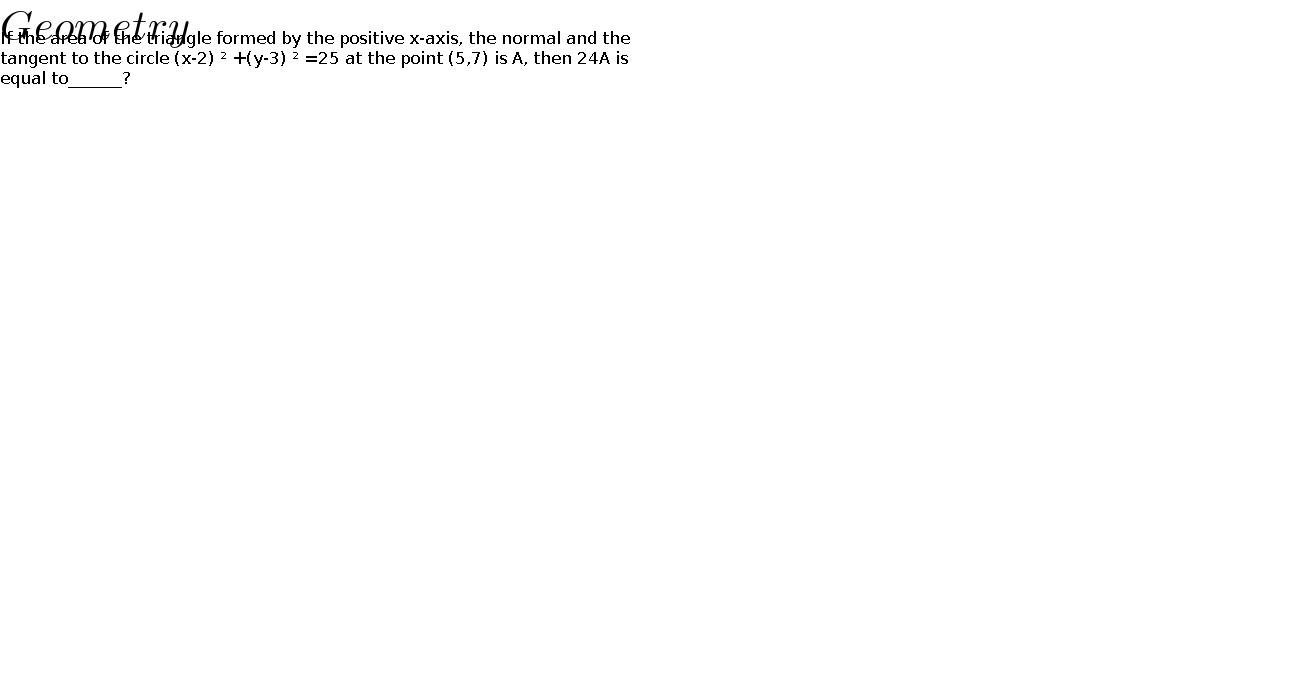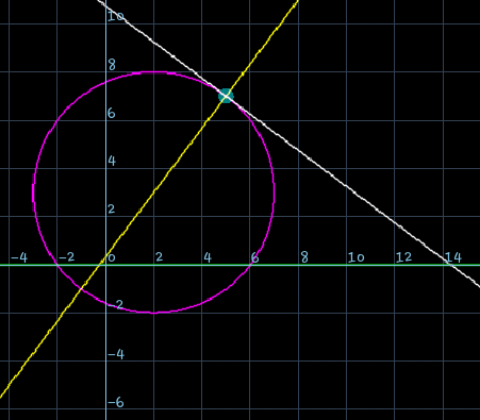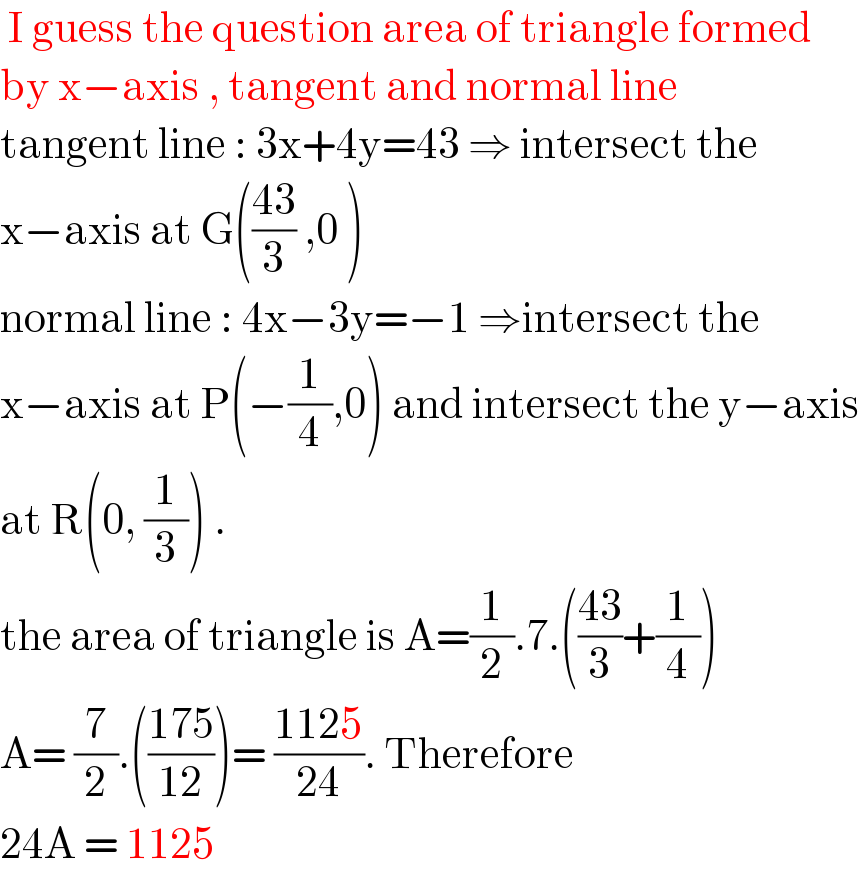Question Number 135570 by bemath last updated on 14/Mar/21
If the area of the triangle formed by the positive x-axis, the normal and the tangent to the circle (x-2) ² +(y-3) ² =25 at the point (5,7) is A, then 24A is equal to______?
Answered by EDWIN88 last updated on 14/Mar/21
Commented by EDWIN88 last updated on 14/Mar/21





